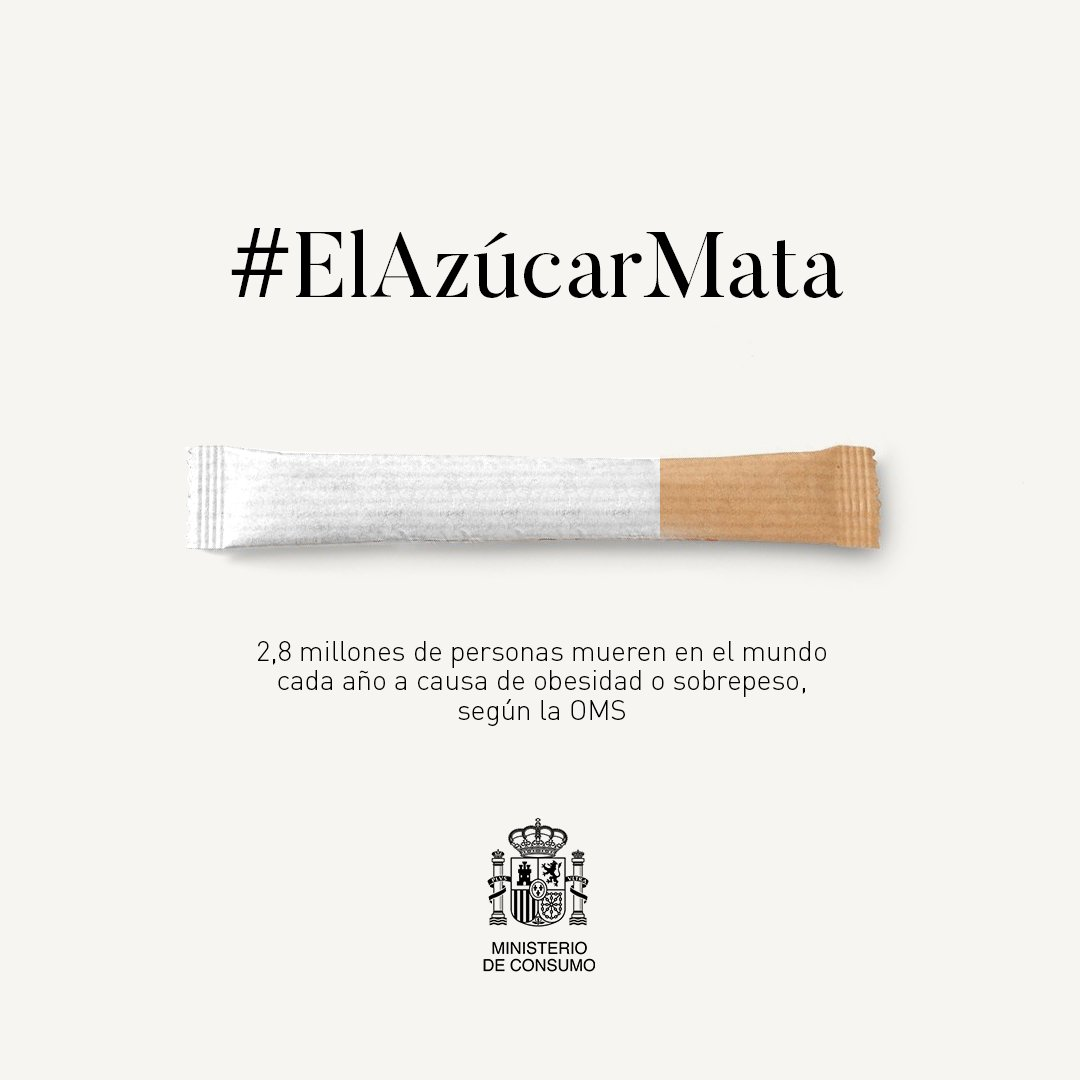Profile.Boticaria García, the influencer who came out of a town pharmacy
Boticaria García Natural cosmetics, neither more natural nor safer
The "back to school" has arrived loaded with tasks within the government in the field of promoting healthy habits.
It might seem like we have a new crusade against obesity.
And is not for less.
The data from the Aladino study (more than 40% of overweight and obese Spanish children) are scary, and not Halloween pumpkins.
Winter is coming
and now we need this strategic plan to be effectively implemented and expanded ... and pedagogy.
A lot of pedagogy.
Sugar mat
Oh misinformation too
On October 16, coinciding with World Food Day, the Ministry of Consumption launched a groundbreaking campaign that has not left anyone indifferent: # ElAzúcarMata.
A sugar in a cigarette-shaped envelope on a white background seeks to draw attention to this fact: 2.8 million people die in the world every year from obesity or overweight, according to the WHO.
Is such a tough campaign effective, in which sugar is equated, albeit metaphorically, with tobacco?
We may never know.
What we do know is that, to date, no one had dared to "reach out" so explicitly to the consumption of unhealthy products.
And this, nuances aside, for me is already a great step forward
Estudio Aladino: Spain is not doing well
Since 2011, the "Study on diet, physical activity, child development and obesity" (ALADINO) in schoolchildren aged 6 to 9 years has been carried out in Spain.
The data published this year show that 58.9% of schoolchildren are normal weight while 40.6% are overweight or obese.
In other words, almost half of Spanish children are overweight or obese.
The study throws up numerous interesting data to reel off.
Among them the higher prevalence of overweight and obesity in low-income families (they have coined the word "poor") or the high level of sedentary lifestyle among schoolchildren.
However, I find it interesting to note that the study shows that many parents are not aware of their children's overweight or obesity problems.
Nine out of ten parents of overweight schoolchildren consider their child's weight to be normal and 4 out of 10 obese school parents, surprisingly, have the same perception.
Without falling into pointing the finger at families (perhaps the fault lies with those who have not been concerned with pedagogy), how to solve a problem when most parents or caregivers are unaware that it exists?
PAOS code: it was time to get my hands on it
From the Ministry of Consumption they are also going to put their hands on the PAOS code that regulates advertising in infant food.
To begin with, the objective is to prohibit the advertising of unhealthy products in those under fifteen years of age.
This measure has been received with skepticism because the prohibition was already fixed until twelve years.
But nevertheless, and to put it in an elegant way, until now the PAOS code was not being followed in a scrupulous way.
From Alberto Garzón's ministry, aware of the importance of hardening these measures, they intend to definitively end practices of dubious ethics.
Prohibiting the inclusion of dolls or gift toys in unhealthy children's products or ending the packaging of these products to be decorated with cartoons or similar, are some of the most anticipated guidelines.
As for advertising aimed at children, only products that are in the first two Nutriscore categories will be allowed.
And that's another melon.
Or melonazo.
Nutriscore: the controversy is served
The famous traffic light, which classifies processed products according to their nutritional interest in five categories (from green to red), is expected to land definitively in our lives during the first four months of 2021. It is possible that this frontal labeling, the tool that It has been chosen in the European Union, to help the consumer when making some choices, but we must bear in mind that it is by no means a perfect tool.
Neither in substance nor in forms.
Regarding the substance, the industry can play with the values of the algorithm to camouflage within the first categories foods that would not actually be healthy.
And as for the forms, it is important to insist to the population that, regardless of the colors of the traffic light, it is best to choose foods that do not directly have Nutriscore incorporated, that is, fresh food.
Not only do we need front labeling, we need people to know how to use it.
VAT hike on sugary drinks: will it do any good?
Although the proposal to raise VAT from 10 to 21 on sugary and sweetened beverages has obviously not gone down well within some sectors, it is a measure that has obtained positive results in other countries.
In Spain we also have the Catalan experience which, in principle, seems to have been fruitful.
Three years after raising taxes on sugary drinks in this community, the numbers indicate that the sale of soft drinks has decreased by 22%.
According to surveys, the measure has worked as desired: at first the deterrence has been economic but as time has passed, the population has been reducing the consumption of these products because they consider them unhealthy.
Now the question is, will taxes also be raised on other products where sugar is less obvious?
What about cookies and pastries?
In any case, it is necessary that this measure imposed on unhealthy products is accompanied by other incentive policies.
Beyond raising taxes on unhealthy products, it is essential to lower taxes and encourage the consumption of those that are.
To continue reading for free
Sign inSign up
Or
subscribe to Premium
and you will have access to all the web content of El Mundo
According to the criteria of The Trust Project
Know more

